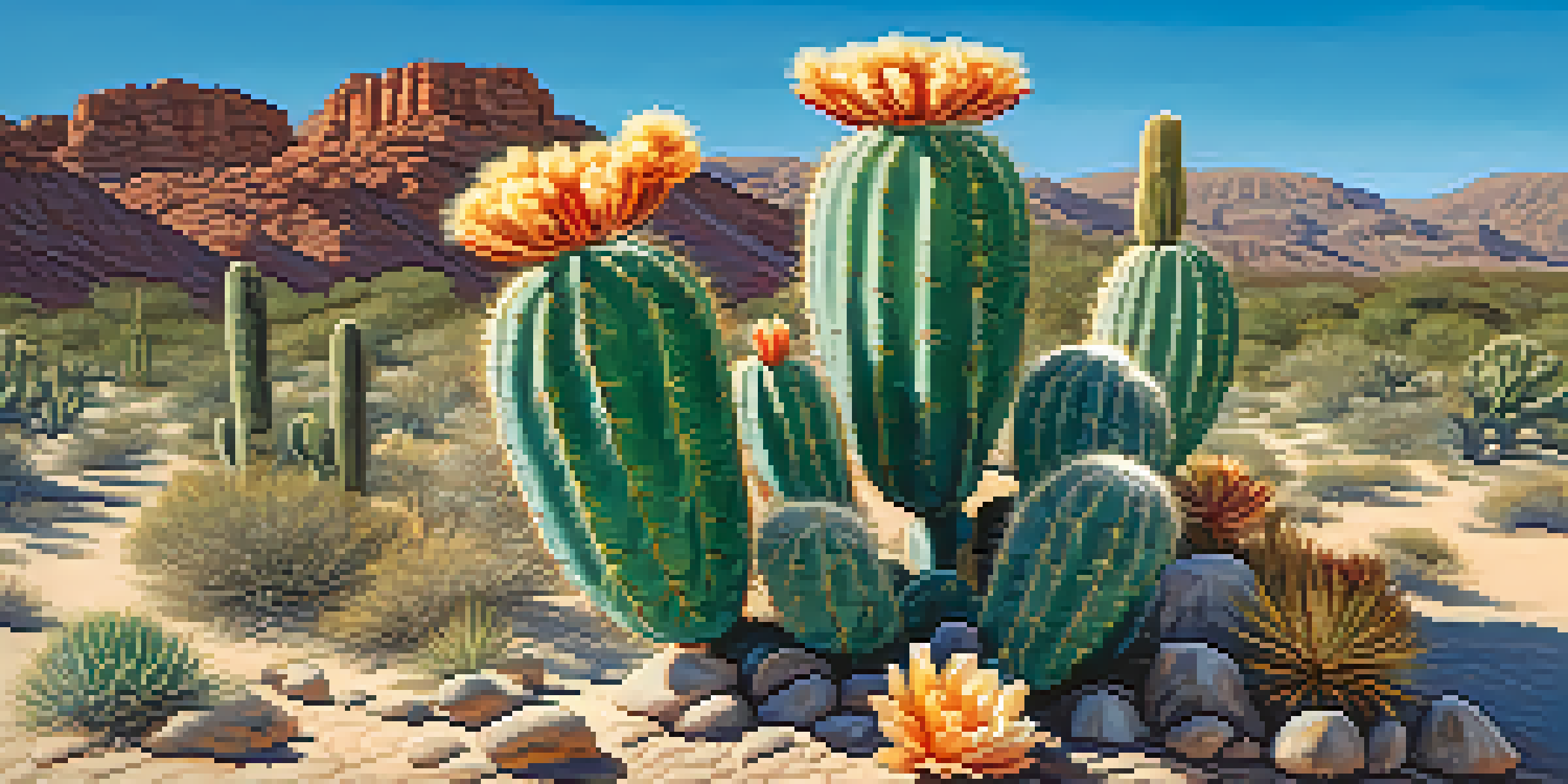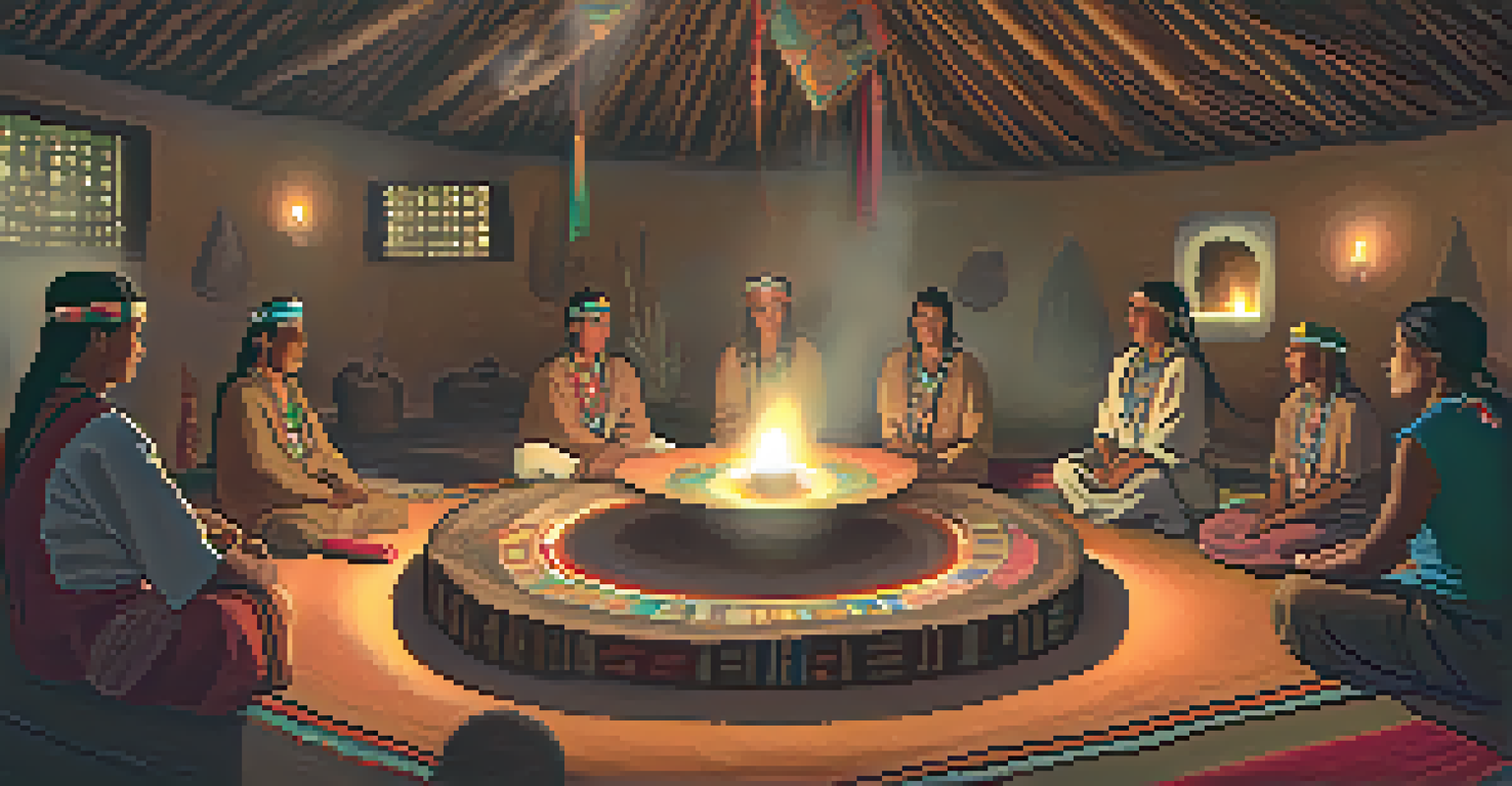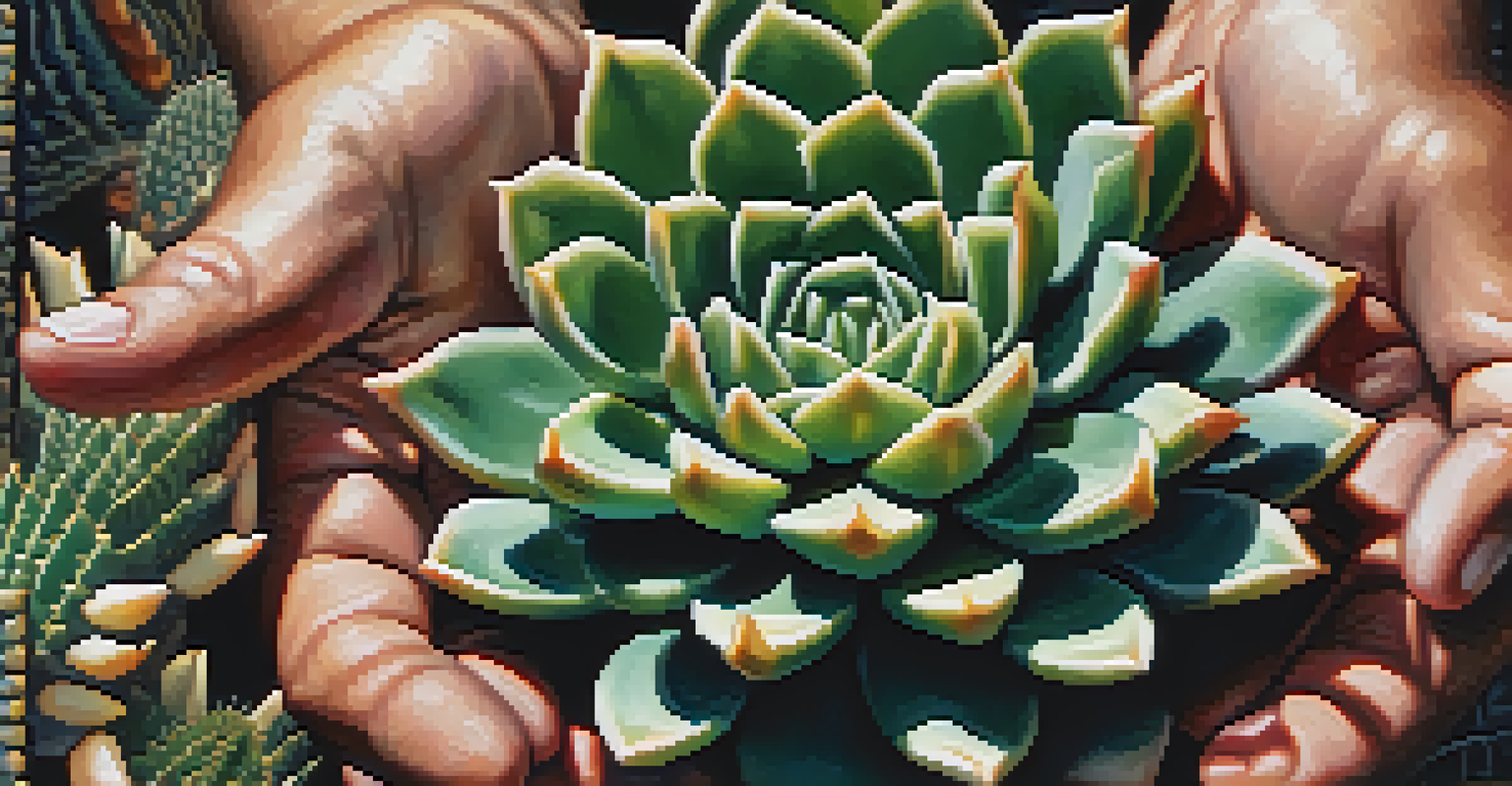The Role of Peyote in Indigenous Healing and Spiritual Rituals

Understanding Peyote: A Sacred Cactus in Tradition
Peyote, a small cactus native to North America, holds immense significance in various Indigenous cultures. Known scientifically as Lophophora williamsii, this plant has been used for centuries in spiritual and healing practices. The psychedelic compound mescaline found in peyote is central to its use, as it is believed to facilitate profound spiritual experiences.
Psychedelics can facilitate profound spiritual experiences and emotional healing, but they must be approached with reverence and understanding.
For many Indigenous peoples, peyote is not merely a plant; it is a revered entity that embodies their cultural and spiritual heritage. It is often associated with the Navajo, Huichol, and various other tribes who integrate its use into their ceremonies. This connection highlights the importance of nature in Indigenous belief systems, where each element serves a purpose in the broader tapestry of life.
The use of peyote in rituals serves as a bridge between the physical and spiritual realms. During ceremonies, participants often seek guidance, healing, and a deeper understanding of their existence. This sacred relationship with peyote illustrates the intricate bond between Indigenous peoples and their environment, emphasizing respect and reverence.
Peyote and Healing: A Path to Well-Being
Indigenous healing practices often incorporate peyote as a means to address physical, emotional, and spiritual ailments. The experience induced by peyote is thought to promote introspection, helping individuals confront personal challenges and traumas. This therapeutic aspect has been recognized both within and outside Indigenous communities, with many seeking its benefits for mental health.

In a typical healing ceremony, a shaman or healer guides participants through the peyote experience, creating a safe space for exploration and healing. The communal aspect of these rituals fosters a sense of belonging, which is vital for emotional recovery. By sharing their experiences, individuals often find solace and support, reinforcing the idea that healing is a collective journey.
Peyote's Role in Indigenous Culture
Peyote is a sacred cactus integral to various Indigenous traditions, facilitating spiritual connections and healing practices.
Research has begun to validate these traditional healing practices, with studies showing that psychedelics, including mescaline, can have positive impacts on mental health. However, it is crucial to approach these practices with respect and understanding, recognizing their cultural significance and the wisdom of Indigenous knowledge systems.
Cultural Significance of Peyote in Rituals
Peyote plays a central role in various Indigenous rituals, symbolizing connection to ancestors and the divine. Ceremonies often revolve around the consumption of peyote, integrating songs, prayers, and storytelling that reflect the community's values and history. This rich tapestry of practices reinforces cultural identity and fosters unity among participants.
The use of peyote is not simply about the substance itself; it is a gateway to ancestral wisdom and a deeper connection with the earth.
For many tribes, the peyote ceremony is a sacred space where individuals can seek guidance from their ancestors and the spiritual realm. The act of consuming peyote is not just about the experience but is deeply embedded in the community's traditions and teachings. This reinforces the idea that spirituality is woven into the very fabric of everyday life.
Moreover, the rituals surrounding peyote emphasize the importance of reciprocity with nature, instilling a sense of responsibility toward the environment. Participants are reminded that their well-being is intertwined with the health of the earth, encouraging sustainable practices that honor the land they inhabit.
The Journey of the Peyote Ceremony
A peyote ceremony typically unfolds over several hours, often taking place overnight. Participants gather in a ceremonial lodge, where the atmosphere is imbued with a sense of reverence and purpose. The ceremony begins with prayers and songs, creating a sacred space that prepares individuals for the peyote experience.
As the peyote is consumed, participants enter a journey of self-discovery and connection. The effects of mescaline can lead to heightened sensory perceptions, vivid imagery, and a profound sense of unity with the universe. This journey is guided by the shaman, who offers support and direction, ensuring that participants feel safe and grounded throughout the experience.
Healing Benefits of Peyote
Peyote is utilized in Indigenous healing ceremonies to address mental health challenges, promoting introspection and community support.
The culmination of the ceremony often involves sharing insights and experiences, fostering a sense of community and healing. This collective sharing reinforces the bonds between participants, highlighting the importance of mutual support in the healing process. Ultimately, the journey through the peyote ceremony is both an individual and communal experience, embodying the essence of Indigenous spirituality.
Legal and Ethical Considerations Surrounding Peyote
The use of peyote is surrounded by legal and ethical considerations, particularly in the context of its sacred status among Indigenous peoples. In the United States, peyote is classified as a Schedule I substance, making its use illegal outside of recognized religious practices. This legal framework often leads to tensions between Indigenous rights and government regulations.
Many Indigenous groups advocate for the protection of their right to use peyote in their spiritual practices, emphasizing the need for cultural preservation and respect. The American Indian Religious Freedom Act (AIRFA) has provided some legal support, allowing members of certain tribes to use peyote in ceremonies. However, the complexities of this legal landscape continue to evolve and present challenges.
As discussions around drug policy reform progress, it is crucial to honor the cultural significance of peyote and the rights of Indigenous communities. Engaging in respectful dialogue and understanding the historical context of peyote use is essential for fostering a more inclusive and equitable approach to these practices.
Modern Perspectives on Peyote Use
In recent years, there has been a growing interest in peyote beyond Indigenous communities, with many people exploring its potential benefits for mental health and spiritual growth. This interest has sparked discussions about the ethical implications of non-Indigenous individuals using peyote, raising questions about cultural appropriation and respect for Indigenous practices. It’s vital to approach this exploration with mindfulness and an understanding of the historical context.
Some Indigenous leaders have expressed concern about the potential commercialization of peyote, fearing that it might dilute its sacred significance. This highlights the importance of education and awareness around the cultural implications of using peyote outside its traditional context. Respecting Indigenous knowledge and practices is paramount in ensuring that the integrity of these rituals remains intact.
Legal and Ethical Challenges Ahead
The legal status of peyote raises ethical concerns about cultural appropriation and the rights of Indigenous peoples to practice their traditions.
As more people seek alternative healing methods, it is essential to promote respectful engagement with Indigenous practices. Building relationships with Indigenous communities and honoring their wisdom can lead to a more meaningful understanding of peyote's role in healing and spirituality, benefiting both Indigenous and non-Indigenous seekers alike.
The Future of Peyote in Indigenous Healing Practices
Looking ahead, the future of peyote in Indigenous healing practices is both hopeful and complex. As awareness of the therapeutic benefits of psychedelics grows, there is an opportunity to advocate for the rights of Indigenous peoples to continue their sacred traditions. This requires a commitment to respecting their cultural practices and ensuring that their voices are heard in discussions about drug policy and mental health.
Moreover, the challenges posed by climate change and habitat loss threaten the availability of peyote, which could impact its use in healing rituals. Conservation efforts and sustainable practices are essential to protect this sacred plant and ensure that future generations can access its benefits. Collaboration between Indigenous communities, environmental organizations, and policymakers will be key in navigating these challenges.

Ultimately, the future of peyote in Indigenous healing practices lies in a balance between honoring tradition and adapting to contemporary realities. By fostering mutual respect and understanding, we can support Indigenous communities in preserving their cultural heritage while also exploring the broader implications of peyote in today's world.